I don’t think what @johnh says is inaccurate. There may be a little excessive rhetoric, but it’s there or thereabouts.
One at a time:
It is nothing like flying in the US.
Airspace is a nightmare, for VFR which is what he refers to when he says that. You can’t just draw a straight line and assume ATC will clear you through at typical VFR altitudes – if you do that you’ll come unstuck very quickly. You need to examine the route carefully, understand the nature of different sorts of airspace in different localities, and try to figure out what you’ll get cleared through and what you won’t.
Clearly Europe doesn’t have weather as reliable as California.
Small plane IFR is pretty much unheard of. There are very few of you, relatively speaking, doing this. It’s a tiny percentage of the GA community, much smaller than in the US. Route planning may be ok with things like autorouter, but these are third-party hacks – they are not ‘the system’. Keeping currency does require serious work (I find it hard enough to keep my IR(R) valid), and while you’ll get pop-up clearances through isolated bits of CAS you don’t get US-style pop-up clearances where you are thereafter a regular IFR flight ‘in the system’.
Rules do vary extensively from country to country, although this is to be expected – despite the best efforts of some they are still different countries.
By far the vast majority of European light GA is either A-A or A-B over a relatively short distance.
Those who make it work beyond this have invested serious time and effort in making it work. You perhaps don’t realise it, but in making European IFR (or non-trivial VFR) work you have acquired an awful lot of activity-specific and geography-specific knowledge. I’m only going to the Channel Islands at the weekend, and it’s not a big deal because I’ve been several times before and know it well, but when I sit down and think about the amount of knowledge I am drawing on to make the trip work – much of it trip-specific – it is quite staggering. A newly-minted PPL would not be able to do it, not because they don’t have the aviating skills but because they wouldn’t know how to make it work. Or they might get there, but would probably encounter all sorts of issues along the way like not getting decent ATC service, ending up at undesirable altitudes over the sea, having to route around airspace, getting in trouble with Border Force / Police, etc.
Welcome to EuroGA, AviatorMD 
I will respond in more detail when I have time (just got home from holiday) but here are some detailed trip writeups which show both VFR and IFR on Europe.
I have flown in the US (have a standalone US commercial/instrument which I did partly out of KCHD, as well as UK private/instrument (PPL/IR) and fly an N-reg) so I know the US scene in general terms and while Europe is different in the way one goes about interacting with the system, there isn’t much in it.
What does differ a lot is the “ground hassle”. Europe is a world leader in job creation, job protection, job demarcation and all the good old communist-era restrictive practices, which largely died out in industry but carry on very happily in aviation management. And the more south you go in Europe the less transparency there is in “corporate conduct”; not so much outright corruption (although S Europe is often only a close second to the 3rd World there too) as a general need for a lot more due diligence before going somewhere. The bottom line is that a European pilot who wants to get value out of flying needs to choose his battles a lot more carefully. Some airports are just not worth the hassle or the cost, but it still leaves a load of good ones. I’ve written up a lot of trips at the above link, in detail so one can see the planning, the wx sources, etc. And then there is the matrix of which airports have avgas and which airports have customs/immigration (a big chunk of European mainland is in Schengen but that does not fully address this either) and you have to work your flights around that.
Any questions, feel free to post them here  We have a load of experienced pilots here – both VFR and IFR – and we have a lot of aircraft owners; well, the two things tend to go hand in hand.
We have a load of experienced pilots here – both VFR and IFR – and we have a lot of aircraft owners; well, the two things tend to go hand in hand.
johnh wrote:
But when I see all the discussions here about what route to take, how to get a handoff between France and the UK at small plane altitudes, and all the rest – let’s say it’s not exactly encouraging.
The UK, and in particular its airspace border to France, is a special case. That’s why you see so much discussion about that and not much about routing issues in other places. I admit I haven’t flown recently in either France or the UK, but I do have in Germany, Austria, Croatia, Slovenia, Italy, Czech republic, Denmark, Norway, Finland and (of course) Sweden, without any routing problems.
But of course it is true that flying in Europe is frequently very different from flying in the US. Part of the reason is that the EU is not a political union. While the EU does have a common regulatory framework for aviation, it gives leeway for individual countries – in particular as regards airspace structure and policy for airspace access.
Also, in the US, airports are typically seen as infrastructure while in Europe they’re typically primarily seen as revenue-making businesses. (Which is a bit ironic considering the common saying that the US is “capitalist” and Europe “socialist”.)
Peter wrote:
Europe is a world leader in job creation, job protection, job demarcation and all the good old communist-era restrictive practices,
Don’t take Peter too seriously here. He is certainly right that apparently pointless (and occasionally hostile) practices by airport management is common but the above is his explanation for all business and government behaviour that he doesn’t like. 
I agree with A_A; I was quite wrong. The following countries are still comfortably ahead of Europe:
China
Cuba
Laos (Lao People’s Democratic Republic)
North Korea
Vietnam

On some other points:
1. Is there much paperwork that need to be filled out when crossing over to different country? Covid forms, customs, immigration etc
Not much paperwork as such; mostly done by email. Covid, you still need a vaccination certificate for some places but not many; this is quite a good site which is mostly accurate. C&I is done by checking AIP+NOTAMS (always check these, for airports; lots of reasons e.g. some airports publish their opening hours only by notam) and then sending any PNR/PPR by email.
2. I use Foreflight exclusively and prefer to use it in Europe. Is that sufficient or I should get familiar with other apps or websites such at Autorouter to file IFR?
FF should work but the AR is currently the better tool for gaming the European Eurocontrol routing system, mostly.
3. Am I required to file IFR when cross borders into different countries.
No. You can use VFR or IFR, but IFR is a whole lot easier because (to put it somewhat simplistically) ATC works for you (default: you have a whole-route clearance, like everywhere in the world in IFR) rather than against you (default: you have no clearance and have to get it from each ATC sector as you go along). See my trip writeups; I also have some flying videos some of which have more or less the whole relevant ATC sound track. Since I got the IR in 2006 I have flown IFR almost totally when outside the UK. Since this I would do the same in the UK too, but I fly a lot less in the UK now.
4. Any GA friendly airport in South of france, Corsica, Sardinia and Ibiza.
See replies by others. France still has plenty which are OK. Also check out the EuroGA airport database and its map. The main issue in France right now is that over the last 10+ years they have removed C+I from 100+ airports which restricts UK/Swiss/Croatia/etc flight to a much smaller number, and some airports have gone crazy. Some strange internal games, probably. Corsica is OK; search the forum. Sardinia is hard. Ibiza probably ok but likely v. expensive.
Airspace is a nightmare – certainly in France. If you fly VFR you will spend hours trying to figure out a route, including constant altitude changes, that keeps you clear of stuff you’re not meant to fly through. You MIGHT get a clearance for something better, but you can’t count on it, and better always have a plan for if you don’t.
True, but a) this is the case all over Europe and IFR deals with this effectively everywhere and b) in France you generally get a very casual “proceed” clearance on the route you tell them about (they rarely use “cleared”). But as I say IFR is the way to go.
Small plane IFR is pretty much unheard of. There are a brave few on this forum who do it, for whom I have the utmost respect. But as you can see from the discussions on here, every flight plan is a work of several days choosing routes. ATC here does it so rarely that they don’t really know how to do it. And good luck finding a CFII and airports for retaining instrument currency.
The above is numerically true (private IFR is very small, and miniscule in countries where English is poorly spoken) but do you care? The routing tools generate a route fast. You don’t need a CFII if you fly the 6/6 approaches.
flight plans have to be filed an hour or more in advance
Not generally true.
To my understanding if you have a US FAA license then you can fly a N reg aircraft if Europe without any additional European Pilot license
Yes. This vague regulation, typical of “politically aimed regs” from Brussels, has never been tested or enforced in Europe. Pure FUD, but it largely works in (primary) creating business for conversions and (secondary) suppressing serious GA flying, particularly IFR.
Long term parking of an N-reg is another matter in some places but you won’t be doing that.
The important takeaway from your examples is that immigration and customs are distinct in most of Europe. For international trips you may need one but not the other.
Some parts of Europe, notably Germany and Italy, and Greece to a much smaller extent, are unusual in that an airport can have C or I but not both – one thread. In the rest of the world it nearly always has both, or none. You need just 1 policeman, but that goes against job demarcation, etc  Croatia does it well…
Croatia does it well…
How do you obtain Prior Permission Required (PPR) for destination airport. Just call ahead at FBO or Tower?
Email. Address in the AIP or NOTAM; sometimes it pays to google for the airport’s website for the latest data (yes this is quite stupid). Lots of ways to get these but e.g. our database will deliver aerodrome AIP and aerodrome notams – example. The AIP links expire fast; another weird European thing, so always get them fresh. I would not use a phone because a) in most of Europe, only tower staff will speak English (and often only just about, and most ATC numbers are unpublished) and b) you have no written record. The drawback is obviously that this needs to be done well ahead of the time, and most airports never reply to emails which is a fairly basic problem with “PN” airports (this kind of crap worries a lot of people, but actually that airport does reply).
Those who make it work beyond this have invested serious time and effort in making it work
An IR is a big job allright but it pays off. I would simply not fly widely in Europe without it. And indeed the vast majority of European pilots don’t fly anywhere far, although perhaps an equal size reason is ELP – example of France
The UK, and in particular its airspace border to France, is a special case
Some weird stuff in the UK allright, due to ATC funding politics – example example. Simple IFR in the UK works ok but only at oxygen altitudes (actually the oxygen bit applies to much of Europe, because Eurocontrol routings work a lot better at say 9k+), but the UK allows non-radio IFR OCAS too  so you can just drill holes in clouds on a “VFR” flight and nobody cares; this is a good way to get around the UK, but as with all VFR flight you need to check the route for restrictions etc.
so you can just drill holes in clouds on a “VFR” flight and nobody cares; this is a good way to get around the UK, but as with all VFR flight you need to check the route for restrictions etc.
I guess I ought to put the counter-piece to my own opinion, specifically for France. Weather and airspace are a problem, but France is actually pretty small-plane friendly. There is an ATC service specifically for VFR, called “Xxx Info” (e.g. Nice Info) – the nearest thing to US Flight Following. In my experience English usually works OK with them, listening to other people, though it’s fairly variable.
There are little GA friendly airports all over the place. Forget going into serious commercial airports – while places like San Jose or San Luis Obispo will welcome small planes, Nice or Bordeaux Merignac certainly will not. Even sleepy little Biarritz wants €40 per landing. But around Nice you have Cannes Mandelieu (LFMD), Cuers, Gap and others. Most have a little aeroclub (some have several), with a couple of Robin DR400s or (increasingly) Rotax-powered LSAs.
My experience is that flying here is a lot more social in the US. I’ve got to know as many pilots in one year in France, as in 20 in the US. Partly that’s due to the weather – if you can’t fly, you get to talk to people.
For VFR in France, the SDVFR iPad app is indispensable (I believe SkyDemon is as good, though I’ve never seriously used it). It lets you see whose airspace you will be busting, whether you stand a chance of getting cleared through it and if so how, and how to wiggle around it (horizontally or vertically) in case you don’t. (It’s French-language only though).
The charts are very good. The denser parts of the country are charted at 1:250,000. The CartaBossy charts give an amazing amount of information for their 1:1M scale. It comes in two flavours: weekday and weekend, the latter with much less red ink. Most military airspace (though not all – be careful) is inactive at the weekend.
This is all for flying within France. Flying internationally, even to Italy or Spain or Germany, is a whole different kettle of opportunities to lose your license and get fined. Most French PPLs have never done it.
Naturally you will understand that I totally disagree with most of the comments from @johnh.
Flying IFR is France is simplicity itself. With FF or Autorouter you can almost file and go. But the EASA rule is that you should file 1hr before EOBT. If the plan is validated the rest is just a matter of following directions from ATC but nothing stops you from asking for DCTs. Often you will get them but because there is a lot of military airspace in France, there are times when you will get a refusal. If you are on an airway at or above the MEA of the airway, restricted zones are of no concern. Very few airfields across France have PPR. As under ICAO regs France uses the semi circular rule above 3000’ AMSL ( thousands for IFR and thousands +/- 500ft for VFR. Autorouter, FF and RR have recently been throwing up some strange routings which I have to say are illogical IMO.
It is difficult to find out why a route doesn’t validate so that one can reroute around the problem.
To get full value in flying in France it is handy to learn some phraseology in French. This will give you access to large number of French only airfields. They are usually very friendly, often A/A and very accommodating of accents, poor pronunciation etc. Many of them are also very suitable for a Cirrus 22. Many also have IFR approaches. The AIP will tell you all you need to know. Many airfields never close but there may be no one there just like the USA I believe.
You will only need the phraseology you would normally use anywhere, in sight of the airfield.
As in the USA we say the name of the airfield we are calling prior to our position message. Up until recently, unlike the USA we have not repeated it at the end of the message but I note that that is creeping in here also.
Up until this point you will likely talk to an ATC or SIV (Flight information service) and you can speak to them in English.
As for flying VFR in France. No, flight plan is needed except in such cases as eg crossing the frontier with another country or crossing from the mainland to Corsica or Vice Versa.
For VFR it is worth investing in the “Document VFR” from the SIA. I believe it costs around €30.
Last time I bought it, it contained a guide to VFR flying in France, 1:1million charts, 1:250,000 chart of the Paris area and a " Complimentaire" which contains all the operating hours, frequencies to contact, activities etc of all the “D” “R” “P” zones in France.
Also might be worth doing is to sign up to “Aeroweb” I assume its free for anyone to do so and not just to FFA members.
Most French pilots ( who don’t fly outside the hexagon due to lack of ELP) download SDVFR free and once you are used to it you can plan your flight in about 10mins. But you have FF and I would imagine it does pretty much the same.
What I learnt for VFR planning is simply to draw a straight line from provenance to destination. “D” zones can be crossed at your own peril (your decision whether or not you cross an active danger area) “RA’s” if the SIV says it is active (many will be activated by Notam available during planning on the SIA website as can the network of fast jet corridors) you can contact the frequency in the complimentaire and you will usually get permission to transit. The same applies to CAS, where again you will usually be given a transit approval.
However just in case they cannot accommodate you it is best to have a plan B. Many larger airports ( large for France but small by USA standards) will have VFR routes which you can follow without hassle.
Flying over large towns and cities does require a minimum altitude of 3300’ or for some like Rennes is a minimum of 5500’. If for instance transiting directly over the city of Rennes at less than 5500’ (you are in CAS) and you will gently be reminded of this fact and asked your intentions. Normally, even from an altitude of 3000ft you can see the ring road or industrial area (which most towns and cities have) and you just announce that you will go east or west of the city, unless you want to climb. I have never known it to add more than a few minutes to the journey. The towns and cities requiring such minimum altitudes are marked on the charts and are very few that are of concern on most routes.
“P” zones (best to count them as forbidden territory) don’t tend to be very large and don’t usually have very high ceilings. The compimentaire, however, does list “P” zones that are crossable under certain conditions and what those conditions are.
Yes it is true as I have said that the majority of French pilots do not leave the hexagon, unless in an organised group due to ELP.
It is also true that the majority of French pilots content themselves with a 1hr flight once a week, once every 2 weeks or even just once a month.
However, France is quite geographically large and diverse by European standards and some pilots are happy to fly from one side of it to the other, around 1000km each way which in a Robin or Jodel can take several hours especially for the round trip.
In such cases many prefer to use the airways (marked on the 1:1m chart). Here its very much like flying IFR in CAS its VFR on top if you can get above the weather and return back down through it without going VMC. If you get in trouble ATS (both civil and military) are your friend. They just want to see you safe not to punish you for your mistakes.
Welcome to answer any questions you might have.
@Johnh if you find yourself at LFFK would be glad to help solve any difficulties you might be having.
France has a nicely joined-up ATC system, with flight plans visible to all, and is one of the easiest places in Europe for VFR. IFR works as well as anywhere.
The only negatives, for VFR and especially for IFR are:
As I said before, if you have an IR which you sweated blood and busted your gut to get, use it even if 95-99% of the time you never enter IMC  Suddenly, everywhere, the sun shines and the birds sing. That is how Europe is set up. IFR just works.
Suddenly, everywhere, the sun shines and the birds sing. That is how Europe is set up. IFR just works.
Anywhere, for airports which are non-IFR / OCAS, you need the VFR charts. FF comes with these although you often have to pay extra. For example I paid for the UK CAA 1:500k VFR charts (I now fly with FF). But VFR is best avoided for this reason which can really drop you in the sh*it unless you are well prepared and have a GPS which shows VRPs. Like always refuelling immediately after landing, this is a lesson which I have painfully re-learnt many times.
I must say that flying in France VFR is not very compicated in practice. I fly straight lines between VOR (for routing facility) and have never been denied a transit.
Some examples of VFR Flights
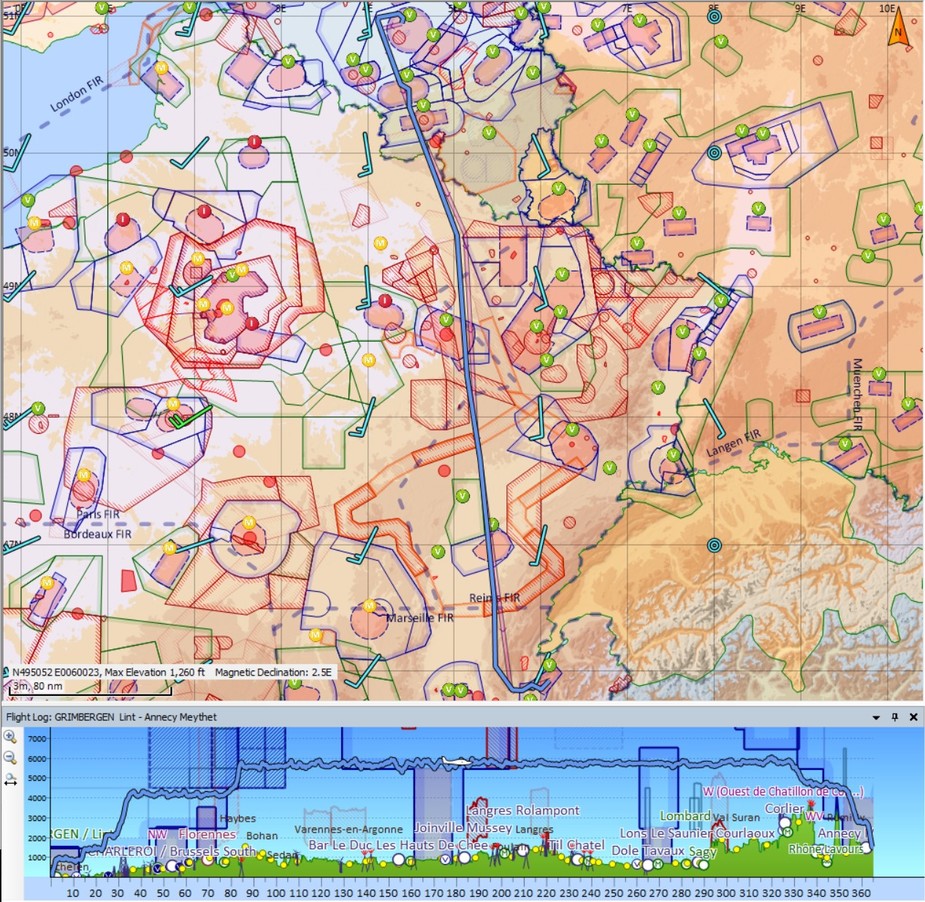
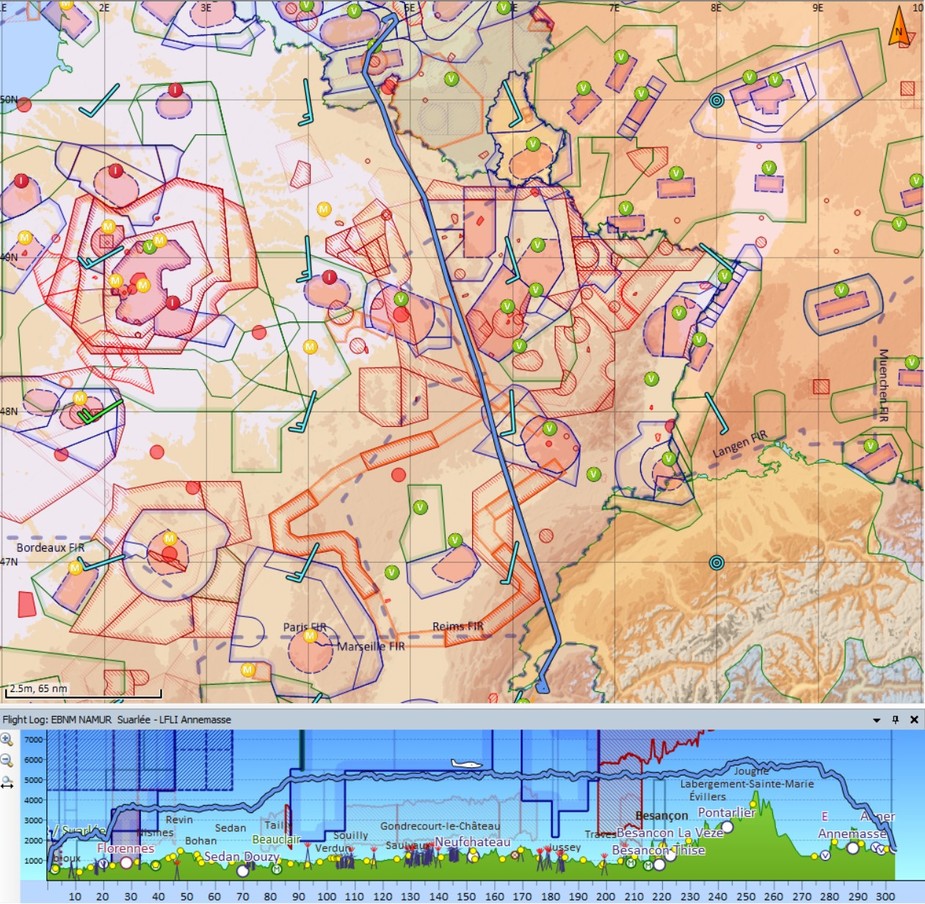
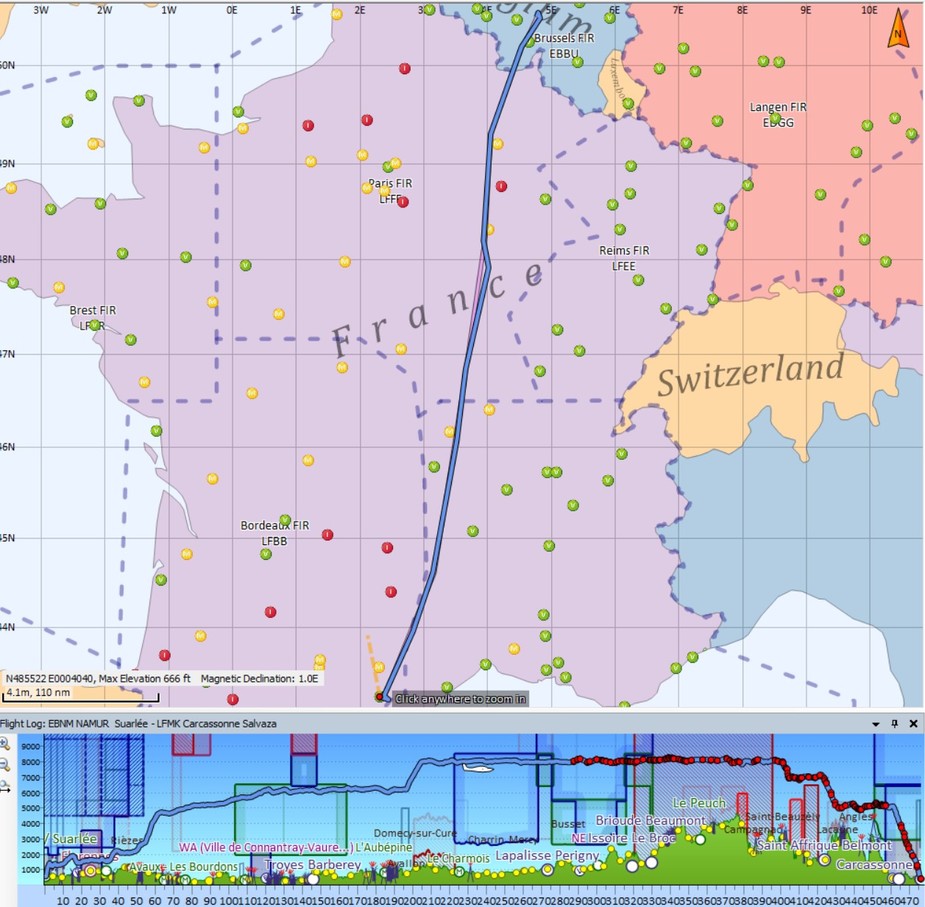
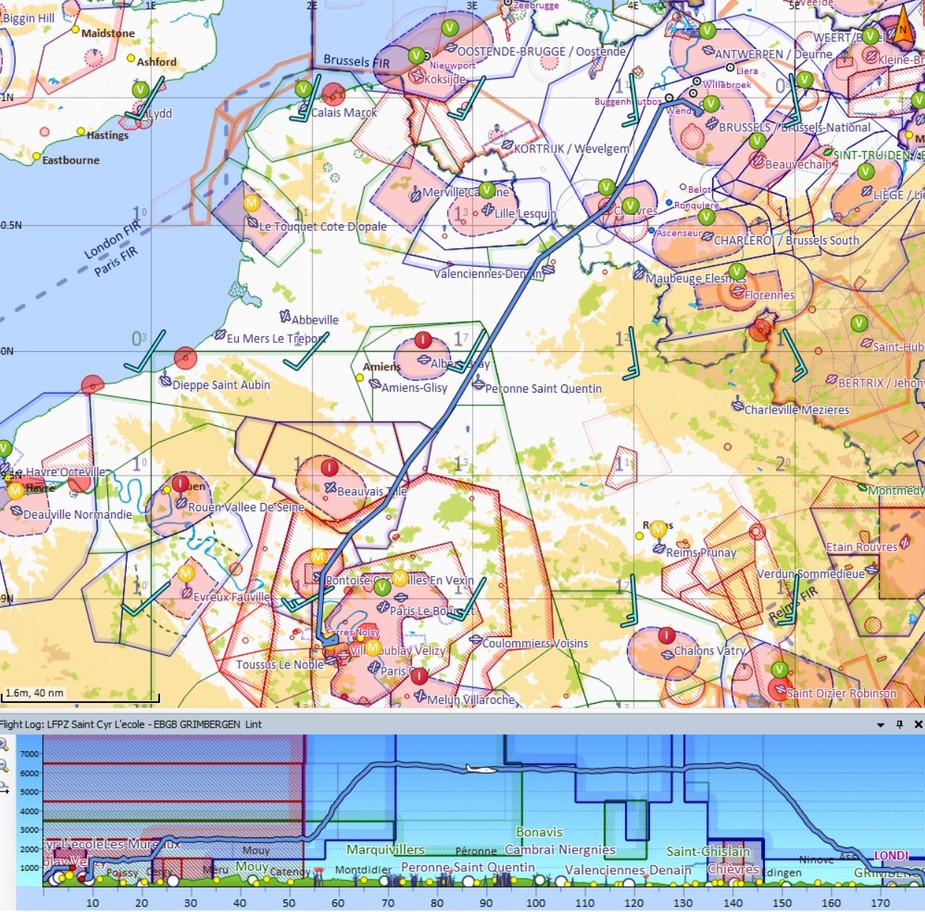
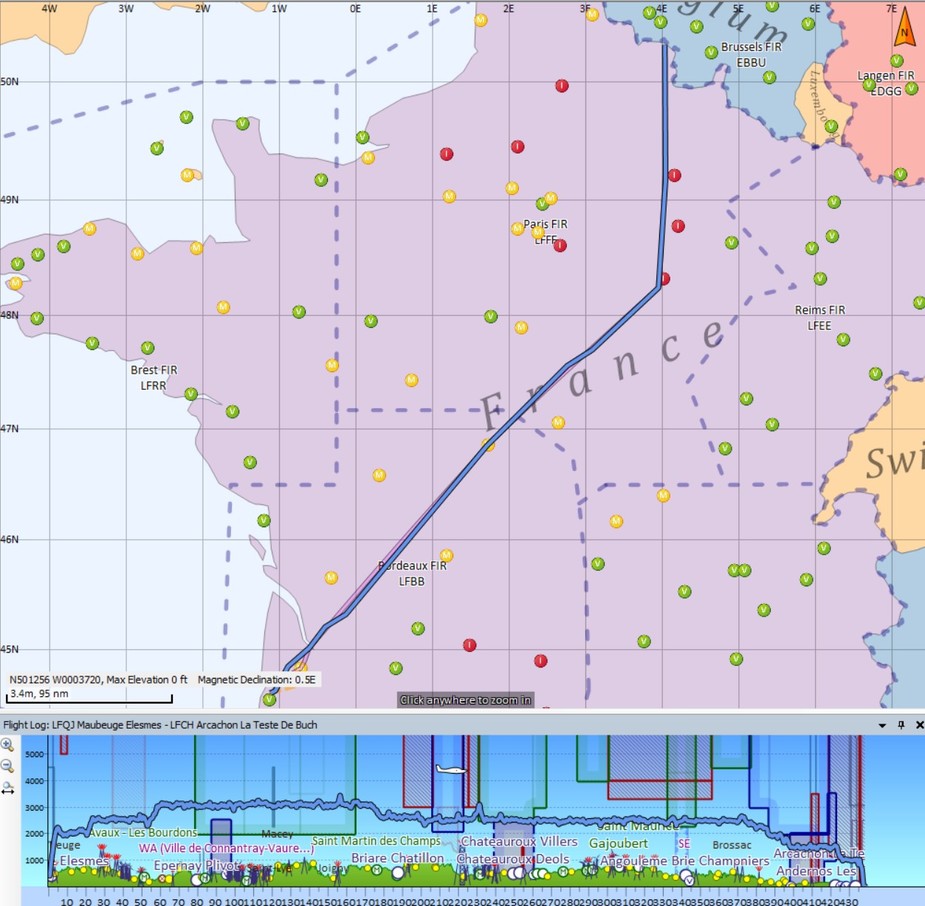
johnh wrote:
Most French PPLs have never done it.
My understanding it’s money and language barriers mostly? Aeroclubs tend to do international touring flight but it’s 4 pob sharing legs on international raleys/raids where you get a t-shirt, coffee mug and all paperwork sorted for you 
IFR touring is expensive and involve some hassle, mostly on the ground (NOTAMS, closures, PPR, customs, fuel, handling), one needs a justification to go and do that? going to isolated islands or beaches, tend to offer better experiences…but it’s a hard to sell hobby, unless you get a countryside house with nearby strip
The hassle while flying VFR/IFR is nil, the flying part is the fun one, I flew 4h in UK/France at 500ft agl this weekend, the return was in CAVOK under VFR wiggling between airspace and enjoying the views, it was worth it, 20min planning max on SkyDemon for each leg (Oxford, Thurxton, LeeOnSolent, LeToquuet, Rouen)
I just filed FCS 1522 for denied access at Southampton (takes 2min to fill up), later on the ground I learned they had some twin that returned from Ireland and landed back on one engine as well as some helicopter helimed was operating in the area after some car hit and run, still none of it is an excuse to get refused VFR transit in Delta airspace with 10min notice under my own separation in good weather, I had planned to avoid their CTR but still filling the form…